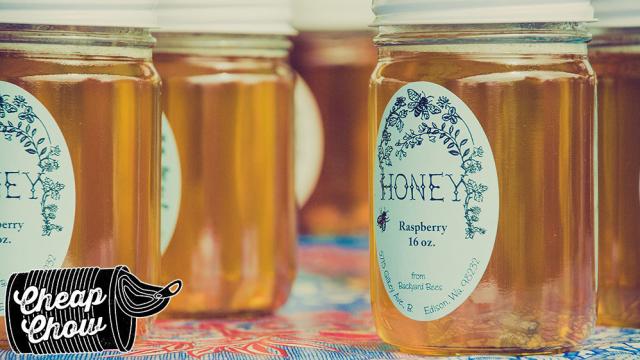Wasteful packaging is an inescapable part of drawing breath in a capitalist society but, for a variety of reasons, most people can’t alter their food choices based solely on the materials that contain it. This is why I reuse food packaging whenever I can: sure, it cuts down on waste, but I also get to stock up on storage containers for free.
Most food packaging is plastic; thanks to widespread misinformation about plastic and food safety, you might think that the recycling bin is the only good place for an empty yoghurt container. This isn’t the case. Safely reusing plastics is a super simple, two-step process.
First, check the resin identification code, which is printed inside the little recycling logo on the bottom of a plastic container. It tells you which compound(s) the container’s made of, which in turn tells you what you can and cannot do with it; most are dishwasher and freezer-safe, but always do a quick Google if you’re unsure.
Second, never assume that plastic packaging is microwave-safe. The whole “microwaving plastic releases dioxins into your food!” thing is totally bunk, but for a variety of other reasons, food storage plastics shouldn’t go in the microwave.
If you bring your lunch to work, spring for a few sturdy, leak-proof, microwave-safe containers and use the repurposed stuff to organise your fridge.
With those two points hammered out, all that’s left is choosing the shapes and sizes of food containers that fill holes in your collection. I think this is actually the strongest argument for reusing food packaging: you can customise the size selection to perfectly fit your needs.
Here are two of my favourites:
- Feta cheese (in brine) buckets: These guys are flat, stackable and unbelievably watertight. I have a big one and a small one and I get really bummed when both are in use — guess I’ll just have to get more feta.
- Yoghurt and sour cream tubs: I love deli containers, but having some smaller plastic tubs kicking around makes it easy to corral leftovers.
One potential downside to reusing food containers is lingering smells, but a white vinegar rinse works wonders. If you’re especially concerned about smells — and honestly, even if you’re not — glass packaging could be a better move.
Just about anything made of glass can be reused indefinitely, but keep in mind that metal snap lids (like the ones on jam jars) are designed to provide an airtight seal exactly once. An old Bonne Maman jar is a great choice for, say, pressure cooker toasted cream or lemon curd — just not canned pickles, jam or anything you intend to store at room temperature.
Not everything is reusable, but most allegedly “single-use” packaging absolutely is. We should all be doing our best to reduce the amount of trash we contribute to landfills and this is one small way to do just that (while also saving some cash).

Comments
One response to “How To Safely Reuse Food Packaging”
Even if you don’t re-use it for food there are tons of other uses for fast food (and regular food packaging). Peanut paste or jam jars make great nail and screw holders. You can do some stuff like nailing the lid to a board and fixing the board to the roof and you simply screw the jar of nails (or whatever) in like a lightbulb. Just make sure it’s not a perishable plastic or you’ll find the nails scattered everywhere.
Chinese takeaway tubs or bowls are really handy too. Rectangular ones are good for storing pens and crayons and similar items for the kids. The tubs can be used for other stuff sewing supplies, or small packets of stuff like seeds. They’re also handy for putting cord in. If you go camping roll the tent ropes in a circle and put them in a tub rather than trying to bundle them up and put them in a bag where they tangle.
And they’re all handy for small amounts of gardening supplies.